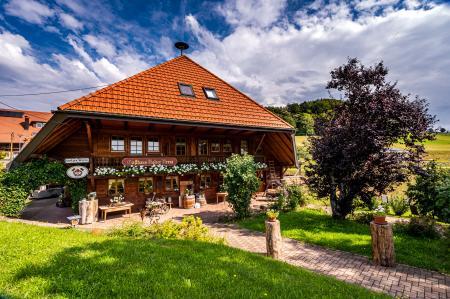The tobacco plant originally came from Central and South America and is mainly cultivated in Central and South America as well as in the USA. But raw tobacco has also been cultivated in Germany since the 16th century. The largest tobacco growing area in Germany is in Baden-Württemberg in North Baden on the north-western edge of the Black Forest. While tobacco cultivation in Germany was one of the most important sources of income for small farmers from the beginning of the 20th century, today it is of little economic importance.
Tobacco cultivation
The tobacco plant is harvested about 70 to 130 days after sowing. Depending on the degree of ripeness, individual leaves are picked and dried for further processing. Natural drying takes between 30 and 90 days, which is why most manufacturers use artificial drying processes. The tobacco is then mixed with various ingredients for further processing. Most common is the use of tobacco leaves for cigars, cigarettes and tobacco pipes. Rarely, it is processed into chewing tobacco or snuff, for example. There are now tobacco-free alternatives to smoking on the market, such as Nicotine free pouch.
Ingredients and effects of tobacco
The main component of tobacco is the alkaloid nicotine, which is colorless and liquid at room temperature. Other ingredients include ammonium salts, proteins and cellulose. The tobacco plant contains organic components such as citric acid and natural resin, as well as inorganic components such as magnesium, chlorine and iron. The nicotine gets through the roots of the plant into the leaves, where it is used to repel insects. Nicotine is also the main ingredient in cigarette smoke and quickly leads to addiction. Nicotine influences the autonomic nervous system and affects the human psyche. In small amounts, it causes the release of adrenaline, which leads to an increase in blood pressure. Larger amounts are lethal; so are already 60 milligrams of nicotine fatal for an adult.
History of tobacco cultivation in Germany
According to a document, the first tobacco in Germany was grown in Hatzenbühl in Rhineland-Palatinate in 1573. Tobacco was first grown for medicinal purposes. The first commercial tobacco cultivation in Holland took place in 1615 and Dutch tobacco farmers then began to grow tobacco in Mannheim. The Thirty Years' War led to a greater spread of tobacco smoking in Germany. Tobacco seeds were brought from France by the Huguenots and cultivated in Baden in the Black Forest. By the end of the 19th century, tobacco cultivation had increased significantly in Germany; the tobacco was grown in about 200.000 farms. Tobacco cultivation became one of the most important sources of income for the farmers, especially in Baden and the southern Palatinate. In 1960, the tobacco blue mold pandemic broke out, causing a large loss of income for many tobacco farmers. Since the 2000s, tobacco cultivation in Germany has only been of economic importance in a few regions such as North Baden.
Cigar industry in Baden
Baden came into being as a grand duchy in 1806 and was a historical territory in Baden-Württemberg. Today, the administrative districts in Baden-Württemberg deviate from the borders of the time, but the name "Baden" is still in use as a designation for the former region. Until the end of the Second World War, Karlsruhe was the Capital of the Republic of Baden, which is in the Schwarzwald located.
The first cigar factory opened in 1840 Lahr in the Black Forest founded. From that point on, there were more and more cigar factories in the surrounding area. For example, in 1906 August Schweizer from Karlsruhe built a cigar factory in Bühlertal and in 1916 he opened a branch in Kappelwindeck.
In the 20s, the cigar industry suffered a setback due to Swiss inflation and the development of machines. In 1933, the Reich government wanted to counteract the associated loss of jobs with a “machine ban law”. After the war, cigarettes, which were smoked faster, became more and more popular than cigars, which meant that the cigar industry in Baden was on the brink of collapse. In 1976 the Association of Upper Baden Cigar Manufacturers dissolved because there were no longer any members.













